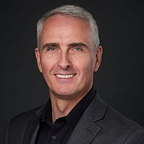A Definition of Adaptability
“It is not the strongest of the species that survives, nor the most intelligent, but the one most responsive to change.”
— Charles Darwin
The industrial age brought about a widely accepted practice of viewing those within organizations as machines. It was believed that by executing repetitive processes, resources and time could be utilized in the most efficient way possible. The assumption was that you could analyze, disassemble, and reassemble organizations in new and improved structures, Taylorism in action. The most notable example of this was the Henry Ford production line. However, the inherent fast-paced change and increasing ambiguity in business has made this way of thinking not only obsolete but also dangerous. Organizations are complex, organic, living systems, that can adapt and grow, while machines cannot — or at least not yet. [1]
Adapting requires creative approaches in anticipation of, or in response to changes in the environment. This starts with each individual’s mindset and cognitive ability. How a person confronts challenges is a way of thinking that requires experimentation and improvisation. [2] This attitude must be pervasive across the entire organization.
In an interview with the Stanford Business School, former United States Army General David Petraeus detailed one of the key lessons learned during the 2006 counter-insurgency in Iraq, stating, “The side that learns the fastest typically prevails.” Following his leadership, within 18 months there was an astounding 85% reduction in violence. He believes this was not based solely on increased resources, but largely due to a surge of ideas. He insists that a leader’s key responsibility is creating a formal, systematic process for facilitating adaptation. He refers to this style of leadership as adaptive and affirmative.
Adaptive leaders assess and respond by anticipating problems and then developing alternative solutions to a wide range of possible outcomes. For this to happen effectively one must be aware of this process, utilizing what is available to speed it up. Understanding this allows you to systematically create the conditions for your organization to be adaptable. This is referred to as developing Adaptive Capacity.
In June of 1950, the Korean war broke out between North and South Korea. Over the next three years, American F-86 Sabres battled Soviet MiG-15s over North Korea in the first jet vs. jet battle in history. By the end of the war, US pilots counted a kill ratio anywhere between 7:1 to 13:1[3]. John Boyd, an American fighter pilot with a keen sense of observation, concluded that this could not solely be attributed to equipment superiority, the American pilots seemingly got “inside” the enemy’s decision cycle. So he came up with a model of adaptation to explain it.
Boyd called this model the OODA Loop, a cycle of Observe-Orient-Decide-Act. Observe is to survey the current environment for any changes, such as detecting enemy aircraft. Orient refers to creating mind models best suited to the situation, in warfare this could mean getting your aircraft into a favorable position. Then comes the Decide stage, where you choose an action from the alternatives you have generated. This is where a fighter pilot would choose the next course of action. Finally, Act, where the decision is implemented, for example pressing the trigger. Following the Act stage, the cycle begins again with a new observation being made.
In 1943, prior to Boyd’s OODA Loop, Scottish psychologist Kenneth Craik suggested that the mind constructs small-scale models of reality, which are then used to anticipate events. [4] Building upon this idea, cognitive scientists have hypothesized that the mind constructs mental models as a result of perception, imagination, knowledge, and prior experience.
Boyd recognized early on that the Orient stage is the heart of the OODA Loop and thus at the core of adaptability. Orientation involves two distinct stages. The first being, what Boyd referred to as “destructive deduction”, essentially the breaking apart of old paradigms. When basic fundamental elements are identified, “creative induction” can begin, forming new mental models that align better with current observations. This accelerates the OODA Loop, triggering a process called Implicit Guidance and Control, whereby comparing observed events with previous mental models, outcomes can be anticipated. This allows us to quickly move through the Decide and Act phases, rapidly responding to an ever-changing environment.
Organizations need to share an open-mindedness in order to expect and accept challenges. It requires expectations that the individuals are able to adjust to consistent change. Adaptable organizations are comfortable with the unexpected, they are able to learn from and adjust easily to any circumstance.
Eric Kish is an author, speaker, and practicing CEO. He is the author of 5 to 50 to 500: How to build and run scalable organizations and Everyday Turnaround: The art and science of daily business transformation
[1] Wheatley 2006, Goldstein, Hazy & Lichtenstein 2010
[2] Heifetz, Grashow & Linsky, 2009
[3] After the war the USAF reviewed its figures in an investigation code-named Sabre Measure Charlie and downgraded the kill ratio of the North American F-86 Sabre against the Mikoyan-Gurevich MiG-15 by half from 14:1 to 7:1
[4] What Are Mental Models? — Mental Models And Reasoning Lab.”http://mentalmodels.princeton.edu/about/what-are-mental-models”.
